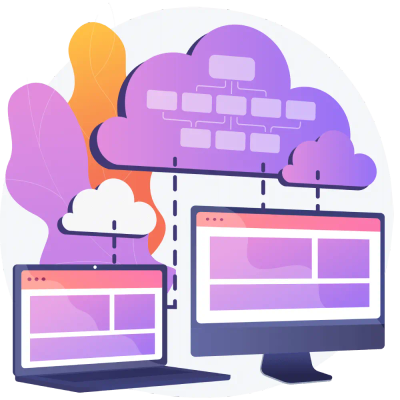Platform Engineering in a Multi-Cloud World

Platform Engineering's Multi-Cloud Challenge
1. Inception
The digital age presents us with an abundance of cloud options. While initially companies aligned with single cloud providers, the landscape has shifted. Now, with providers like AWS, GCP, and Azure offering specialized services, the push towards a multi-cloud approach has never been more compelling. But why is this trend accelerating?
2. Why Multi-Cloud?
a. Business Continuity
- Avoiding Vendor Lock-in: Modern SaaS startups require agility in their operations. Single cloud dependency can prove detrimental, especially when contractual and service changes arise. By diversifying cloud providers, startups ensure they have the flexibility to adapt without major disruptions.
- Redundancy and Disaster Recovery: Enterprise operations are vast, and any downtime can translate into significant revenue loss. A multi-cloud strategy ensures there’s always a backup. For example, If AWS faces an outage, perhaps your operations on Azure remain unaffected.
b. Best-of-Breed Solutions
- Leveraging Unique Features: Each cloud provider has its flagship offerings. AWS might offer a robust computing infrastructure, while Google Cloud is renowned for machine learning capabilities. By not limiting themselves, businesses can tailor their tech stack, choosing the best from each provider.
c. Regulatory and Compliance Needs
- Regional Data Storage: As businesses expand globally, they encounter varied data storage laws. For instance, GDPR in Europe mandates specific data storage and processing practices. Having a presence on a local cloud provider can simplify compliance.
d. Risk Mitigation
- Spread of Assets: By distributing assets across multiple cloud providers, businesses effectively dilute the impact of any singular adverse event or decision made by one provider. This strategic dispersal mitigates potential risks, ensuring a safer and more stable operational environment.
3. Challenges in Implementing Multi-Cloud Strategies
a. Complexity in Management
- Using multiple providers means grappling with different dashboards, API configurations, and services. For startups, especially, this can prove overwhelming, slowing down deployments and increasing the learning curve.
b. Data Management and Transfer Costs
- Transferring data, especially large datasets, between providers can be cost-intensive due to egress fees. Additionally, latency can become an issue if data needs to traverse between providers frequently.
c. Security and Compliance
- While multi-cloud offers redundancy, it also introduces multiple potential points of vulnerability. A security breach in one cloud can have cascading effects, especially if there's data interdependency.
d. Skill Set and Training
- Cloud specialization means a team proficient in AWS might struggle with Azure nuances. Training becomes essential, but it’s also time-consuming and expensive.
4. Strategies for Seamless Multi-Cloud Platform Engineering
a. Unified Management Tools
- Terraform: An open-source tool that allows you to define and provision infrastructure across multiple providers using a simple declarative configuration language.
- Ansible: A powerful automation tool that can handle application deployment and configuration management across varied cloud infrastructures.
b. Containerization and Kubernetes
- Containers, with tools like Docker, provide a consistent environment for applications, making them cloud-agnostic.
- Kubernetes takes this a step further, offering orchestration and scaling of containerized applications, irrespective of the cloud provider.
c. Cloud Agnostic Architecture
- Designing applications to be cloud-neutral is paramount. Utilize open-source tools and ensure minimal dependency on services exclusive to a single provider.
d. Consistent Security and Compliance Frameworks
- A unified security posture across platforms is crucial. Tools like Prisma Cloud can monitor and manage security consistently, sending alerts for any discrepancies.
e. Centralized Monitoring and Logging
- Grafana: An open-source platform for monitoring and observability, it can seamlessly integrate with various data sources, giving a unified performance overview.
For SaaS startups and enterprises, the transition to a multi-cloud world might seem daunting. But, with a judicious mix of strategy, tools, and continuous learning, the rewards are significant. In this intricate dance across the cloud ecosystem, always keep your end-user experience as the focal point.
Your journey through the multi-cloud expanse holds valuable insights. Share your experiences and challenges, and let’s learn together. For those wanting to delve even deeper, visit us at PlatformEngineers.io
